Renaat Braem’s House, Antwerp
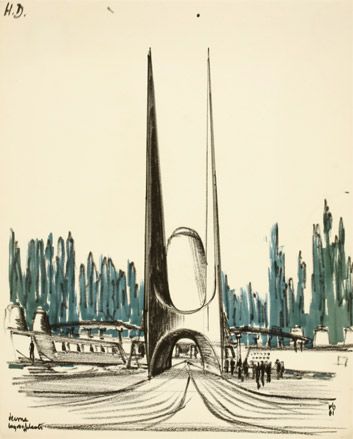
Renaat Braem (1910-2001) may be little known outside his native Belgium, however his place in the architecture history books is indisputable. A representative of Belgium’s Mid-century Modern, the Antwerp-born architect kicked off his career as a trainee with Le Corbusier and worked incessantly from his hometown base since the late 1930s, also contributing to the architecture community with critical writings, such as his seminal essay on Belgium architecture, Het lelijkste land ter wereld [The ugliest country in the world] (1968).
Braem’s own house, built by himself in 1958 and situated in the Deurne suburb of Antwerp, is one of the best preserved examples of his work and the location for our Time & Space fashion shoot in Wallpaper* April 2011 issue. Drawn in by the flowing internal layout, offering horizontal and vertical vistas from one room to the other, the space is further enhanced by the large windows that connect life in the house with the garden and the street bringing in abundant light.
Following the architect’s death in 2001, architects Willem Hulstaert and Walter Slock restored the house with the assistance of architectural historian Jo Braeken and since 2006 it has been open to the public by appointment as a museum.
A ruthless critic of last century Belgium’s urban issues and an International Congresses of Modern Architecture (CIAM) follower for the promotion of architecture as a social art, Braem designed his house according to his architecture principles. Looking at architecture as ‘the art of organising space’, which would eventually help liberate man, the architect created a constellation of functional, interlocking cubes, which create games of volume and void both inside and outside.
The mostly open-plan interior, containing his home as well as his L-shaped office space, uses natural materials and muted tones with Bauhaus-style bright prime colour accents – red, blue and yellow. Exotic objects from all over the world as well as a number of personal objects, souvenirs and designer products – mainly Italian and Danish – furnish the house’s several areas, from the sitting room to the bedroom and black tile bathroom.
Bream is the brains and hand behind some of the most representative modernist examples in Belgium, including the Middelheim Open Air Sculpture Pavilion and the Police Tower, both in Antwerp, as well as several residential projects around the country, so his recent 100th birthday celebration didn’t go unnoticed with the country’s architecture and culture community.
A detailed exhibition of his work was shown in the newly renovated (by architect Stephane Beel) DeSingel culture campus in Antwerp, while his work has been extensively documented in the recent 2-tome book Renaat Braem 1910-2001, by historian Jo Braeken and the Flemish Heirtage Institute (VIOE) for ASP Publishers. An award winner of the Fernand Baudin Prize, the publication was designed by Luc Derycke studios.
Wallpaper* Newsletter
Receive our daily digest of inspiration, escapism and design stories from around the world direct to your inbox
Containing over 300 projects, complemented with sketches and unrealised projects’ drawings in two hefty tomes, this book, combined with a visit at the Renaat Braem Huis would offer the most comprehensive look possible to the visionary Belgian architect’s work and a great insight to one of Belgium’s best kept architectural secrets.
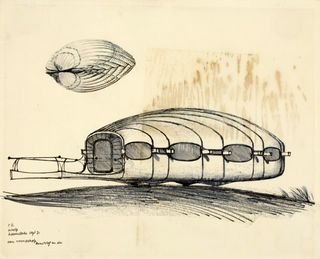
Biomorph study of habitation shell in synthetic and aluminium (1971)
© VIOE (Flemish Heritage Institute)
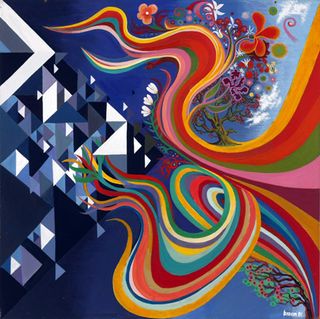
Painting by Braem titled Composition (1981)
© VIOE (Flemish Heritage Institute)
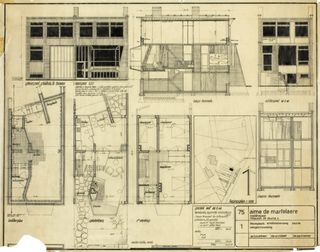
House De Martelaere: side walls, cross-sections and floor plans, located at Schotensesteenweg 301-303, Deurne , Belgium, (1948-1950)
© VIOE (Flemish Heritage Institute)
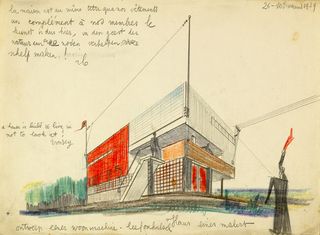
Sketch ‘Haus eines malers’ in ‘New Building’ style (Nieuwe Bouwen) (1929)
© VIOE (Flemish Heritage Institute)

Social housing complex Kiel, Block D from second building phase of the project (1955-1958). Located in Antwerp, Kiel is an example of the neighbourhood unit-principle © VIOE (Flemish Heritage Institute)

Social housing unit Kiel (1949-1958)
© VIOE (Flemish Heritage Institute)

Social housing complex Kiel after completion in 1958
© VIOE (Flemish Heritage Institute)

Satellite City Lillo, implantation plan in Antwerp, (1957)
© VIOE (Flemish Heritage Institute)

Satellite City Lillo, preliminary study from 1957. The design features Braem’s visionary thoughts for spatial planning in Belgium
© VIOE (Flemish Heritage Institute)
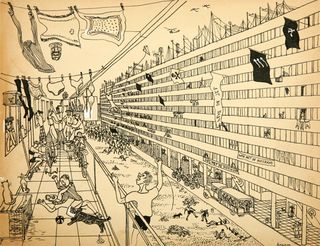
Caricature titled ’Life in high-rise seen by party men from low-rise’ (1953)
© Archives d’Architecture Moderne
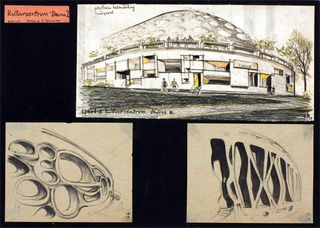
Studies for the plastic treatment of circular construction (1958-1959)
© VIOE (Flemish Heritage Institute)
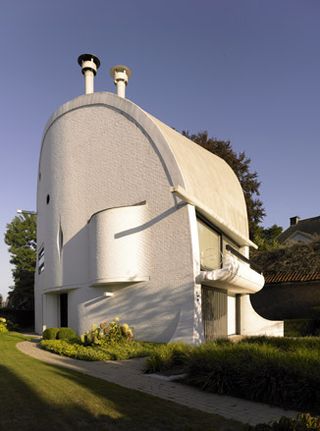
House Van Humbeeck by Braem (1966-1970), at Pastorijstraat 3, Buggenhout, Belgium
© VIOE (Flemish Heritage Institute)
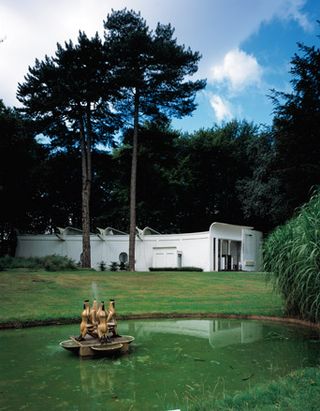
Middelheim pavilion in Antwerp (1963-1971)
© VIOE (Flemish Heritage Institute)
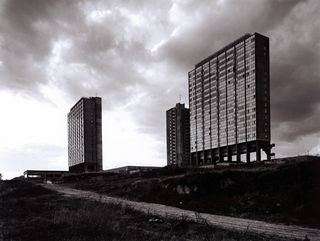
Model district Heizel in Brussels: Forum with central towers (block I,II and III) and the social centre (ca.1965)
© VIOE (Flemish Heritage Institute)

Building of rectorship of Free University of Brussels (VUB): first concept with three towers (1972)
© VIOE (Flemish Heritage Institute)
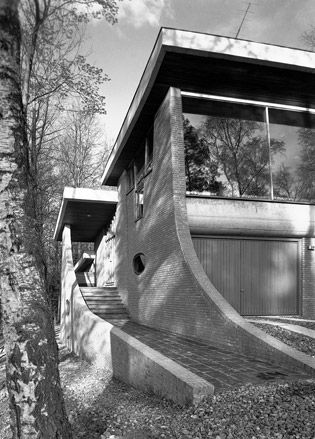
House Alsteens in Overijse (ca. 1969) © VIOE (Flemish Heritage Institute)
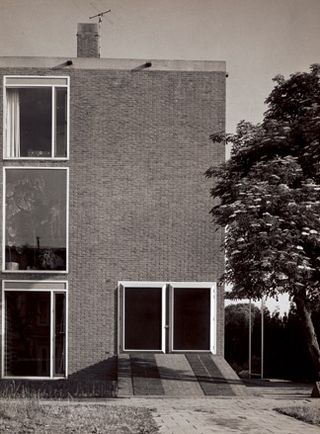
Façade of Renaat Braem’s house at Menegemlei 23, Deurne (ca. 1958) © VIOE (Flemish Heritage Institute)

Renaat Braem’s house: side wall (1953-1958)
© VIOE (Flemish Heritage Institute)

Renaat Braem’s house at Menegemlei 23, Deurne: sitting area with fireplace (ca. 1966) © VIOE (Flemish Heritage Institute)
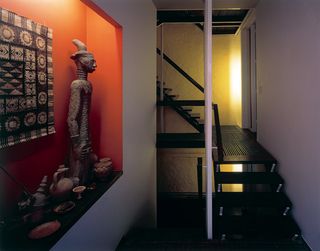
Renaat Braem’s house at Menegemlei 23, Deurne: hall and staircase (1953-1958) © VIOE (Flemish Heritage Institute)
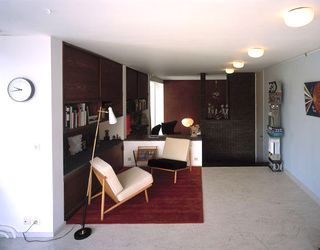
Renaat Braem house: sitting area in living room (1953-1958)
© VIOE (Flemish Heritage Institute)
Location: Menegemlei 23, Deurne (BE)

Bold color accents were used in several areas of the Bream House
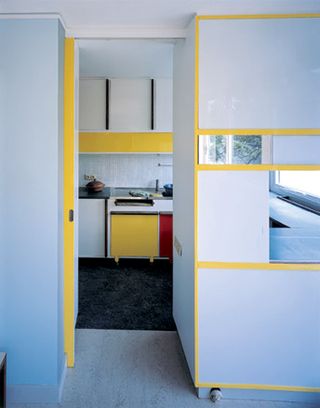
The Braem House kitchen cupboards are highlighted with yellow edges
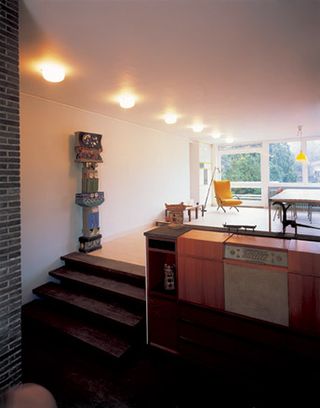
Large openings and carefully placed lighting brings light in the house
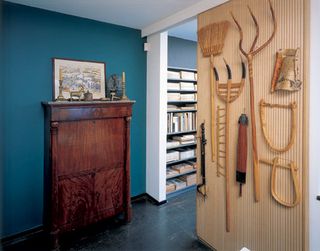
The House feature’s a selection of items Bream collected

Braem’s firm’s offices were also within the house
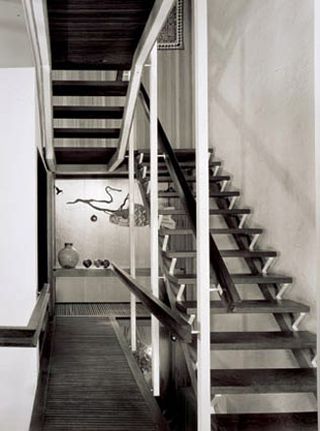
Renaat Braem’s house: hall and staircase (1953-1958)
© VIOE (Flemish Heritage Institute)
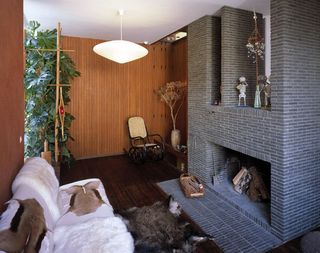
Renaat Braem’s house: sitting area in living room (1953-1958)
© VIOE (Flemish Heritage Institute)
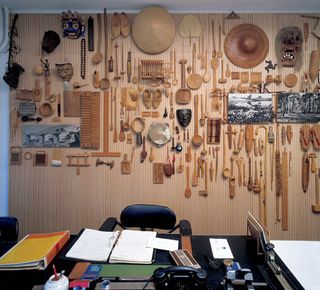
Renaat Braem’s house: African travel objects and memorabilia
© VIOE (Flemish Heritage Institute)

Renaat Braem’s house: hall and staircase (1953-1958)
© VIOE (Flemish Heritage Institute)
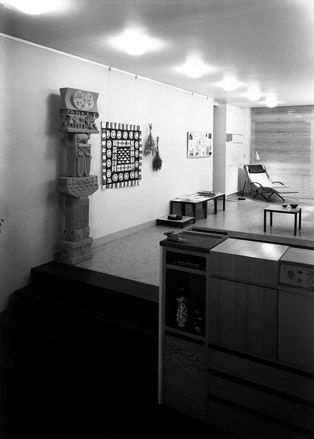
The house’s entrance hall is decorated with items from Braem’s travels
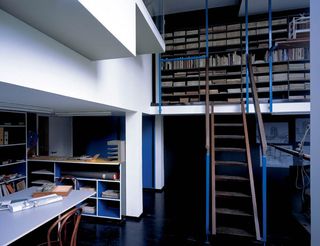
Renaat Braem’s house: atelier (1953-1958)
© VIOE (Flemish Heritage Institute)
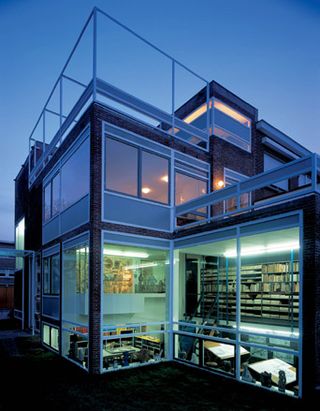
Renaat Braem’s house at nightfall
© VIOE (Flemish Heritage Institute)
Ellie Stathaki is the Architecture & Environment Director at Wallpaper*. She trained as an architect at the Aristotle University of Thessaloniki in Greece and studied architectural history at the Bartlett in London. Now an established journalist, she has been a member of the Wallpaper* team since 2006, visiting buildings across the globe and interviewing leading architects such as Tadao Ando and Rem Koolhaas. Ellie has also taken part in judging panels, moderated events, curated shows and contributed in books, such as The Contemporary House (Thames & Hudson, 2018), Glenn Sestig Architecture Diary (2020) and House London (2022).
-
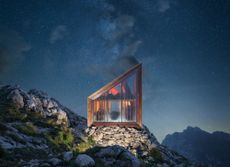 The visual feast of the Sony World Photography Awards 2024 is revealed
The visual feast of the Sony World Photography Awards 2024 is revealedThe Sony World Photography Awards 2024 winners have been revealed – we celebrate the Architecture & Design category’s visual artists
By Ellie Stathaki Published
-
 Don’t Move, Improve 2024: London’s bold, bright and boutique home renovations
Don’t Move, Improve 2024: London’s bold, bright and boutique home renovationsDon’t Move, Improve 2024 reveals its shortlist, with 16 home designs competing for the top spot, to be announced in May
By Ellie Stathaki Published
-
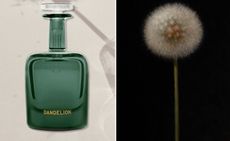 Perfumer H has bottled the scent of dandelions blowing in the wind
Perfumer H has bottled the scent of dandelions blowing in the windPerfumer H has debuted a new fragrance for spring, called Dandelion. Lyn Harris tells Wallpaper* about the process of its creation
By Hannah Tindle Published